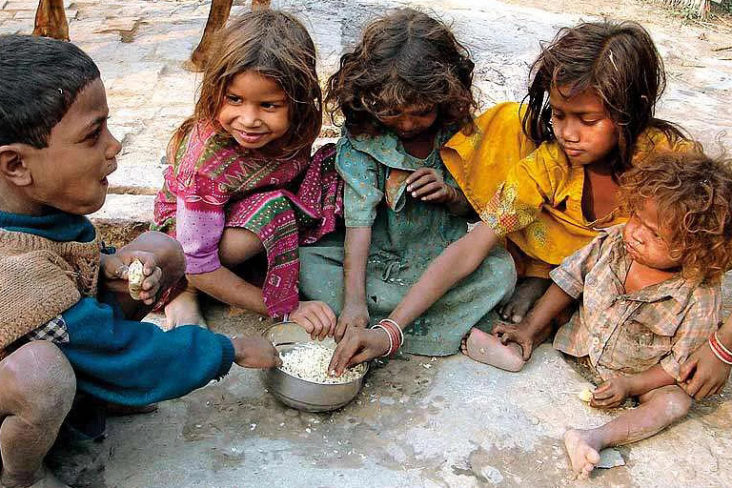Introduction to Nutrition
Nutrition is the selection of foods and preparation of foods and their ingestion to be assimilated by the body. Many of the health problems can be avoided by following a healthy diet. Nutritional status is a measure of the health condition of individual as affected primarily by the intake of food and utilization of nutrients. India is a developing country. There are many kinds of nutrition problems in communities. A nutritional problem refers to a condition when an individual’s body experiences lack of necessary nutrients or some specific nutrient. These problems can lead to several health issues such as anemia. The major nutritional problems are protein energy mal-nutrition, Vitamin A deficiency, iron deficiency (anemia) and iodine disorders.
Protein Energy Malnutrition
Protein-energy malnutrition or PEM is the state of being energy deficient due to the lack of all the macronutrients and many micronutrients. It can occur suddenly or gradually and can be mild, moderate or severe.
Vitamin A deficiency
Vitamin A deficiency can affect growth, cause anaemia,and many eye related diseases. Vitamin A deficiency is major in children. It causes night blindness, keratomalcia and other effect on reproduction, growth etc.
Iron Deficiency
Iron is an essential micronutrient for several body functions like cognitive function, oxygen transport, immune function, differentiation and growth of cells, physical and mental growth. Lack of iron because of either pathological or physiological reasons causes anemia. It occur when our body lacks iron, which our body needs to make hemoglobin. As per the World Health Organization, anaemia is still one of the major health crises occurring because of a shortage in the intake of minerals and vitamins.
Iodine deficiency
Iodine is necessary for the production of thyroid hormone, which is very important for growth, repair and the regulation of metabolism. The dearth of this nutrient can result in mental retardation and growth abnormalities in children. Iodine deficiency disorder mainly includes goitre, hypothyroidism, cretinism, decrease fertility rate, increase infant mortality and mental retardation.
Malnutrition
Malnutrition is a term that refers to any deficiency, excess, shortage or imbalance in intake of energy or nutrients.Under nutrition during pregnancy, or before two years of age may cause permanent mental and physical development problems.
Malnutrition covers two different classes of conditions:
- Under nutrition: This category covers stunting (low height for age), wasting (low weight for height), underweight (low weight for age) and micronutrient deficiencies (lack of important minerals)
- Others – This category consists of overweight, obesity, diet-related non-communicable diseases (such as heart disease, stroke, diabetes, and cancer.
Causes of Malnutrition
- Poverty
- food insecurity
- Poor access to health services
- Lack of education and information
- Poor sanitation
- lack of availability of fresh drinking water:
- Poor breastfeeding
Malnutrition In children
Child malnutrition is major problem and a longstanding challenge for the government of India. The first National Family Health Survey (NFHS) in 1992-1993 found that India was one of the worst countries on child health indicators. Child malnutrition rates are still one of the most alarming across India. The Global Hunger Index (2020) report which is calculated on the factors – total undernourishment of the population, child stunting, wasting and child mortality — places India at the 94th spot among 107 countries. NFHS-5, released in December last year, which surveys 22 states and UTs also showed a dismal situation and showed that malnutrition increased among children in 2019-20 from 2015-16 in 22 states and UTs.
India has slipped to 101st position in the Global Hunger Index (GHI) 2021 of 116 countries, from its 2020 position of 94th and is behind its neighboring countries Pakistan, Bangladesh and Nepal. As per the report, India loses 4% of its GDP annually due to malnourishment and hence, the aim of economic development cannot be achieved without addressing the issue of child malnutrition.
Steps taken by Government for nutritional well being
- POSHAN Abhiyaan (National Nutrition Mission): It is Government of India’s flagship programme to improve nutritional well being in children, pregnant women and lactating mothers. The Anemia Mukt Bharat (AMB) was launched under poshan abhiyaan in 2018 in order to improve Iron and Folic Acid (IFA)levels, behavior change and anemia-related care across 6 target groups including pregnant women, lactating mothers, and children. Read More
- Integrated Child Development Scheme (ICDS): The program is intended to improve the nutritional and health status of children in the age group 0-6 years and reduce the occurrence of mortality, morbidity, and malnutrition and school dropout.
- Public Distribution System: It covers up to 75% of rural population and up to 50% of urban population for getting highly subsidized food grains under Targeted Public Distribution System.
- Midday meal scheme: The scheme provides meals for all school going children in Classes I-VIII of Government, Government-Aided Schools.


